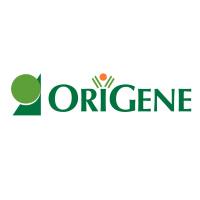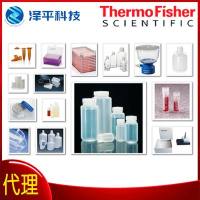Verifying Plasmids
互联网
Although Addgene strives for the highest level of plasmid accuracy, we cannot guarantee that the laboratories that deposit the plasmids have submitted the correct material. For further verification, we recommend that you conduct restriction digests or sequence important regions of the gene.
Addgene is a community-based resource. We rely on scientists for the accuracy of our plasmid information. If you find any inconsistencies in the provided information, or if you have additional data, please let us know by emailing info@addgene.org.
A restriction digest will allow you to verify the size of your plasmid. Also, it is a good idea to verify any restriction sites you will be using for cloning purposes.
-
Select restriction enzymes. Check the plasmid information page for insert and vector information.
Example: To verify plasmid 1859: myc-Raptor, choose SalI and NotI. This digest should give you band sizes of approximately 4.7 kb and 6.0 kb.
-
Determine the appropriate reaction buffer. The optimal buffer is usually packaged with each enzyme during purchase. If you are conducting a double digest, check the enzyme''s manufacturer for a table showing suggested buffers.
Example: For a digest using New England BioLabs (NEB)''s SalI and NotI, NEB''s Double Digestion table recommends using NEBuffer 3.
-
Combine the following in a microfuge tube (20 μL total volume):
1 μg DNA
0.5 μL Each Restriction Enzyme
2 μL 10x Buffer
2 μL 10x BSA (if recommended)
x μL H2 0 (to bring total volume to 20 μL)Tip: If you are doing multiple digests, save time by creating a "master mix."
-
Incubate at 37o C for 1 hour.
Tip: Some enzymes require special conditions for digestion, such as a different temperature. Check the manufacturer''s instructions.
-
Prepare agarose gel.
-
To make a 0.8% agarose gel, use 0.8 g agarose per 100 mL 1x TAE. Cover the flask with plastic wrap to prevent boiling over, then microwave the solution for 1-2 minutes to dissolve the agarose.
Tip: Increase the amount of agarose for better resolution of small bands. Decrease the amount of agarose for better resolution of large bands.
-
Let agarose solution cool for 5 minutes, then add ethidium bromide to a final concentration of 0.5 μg/mL.
Tip: Run cold water over the outside of the flask for faster cooling.
Safety tip: Ethidium bromide is a known mutagen. Wear a lab coat, eye protection, and gloves when working with this chemical.
-
Pour the agarose/ethidium bromide solution into a casting tray with well comb in place. Allow 20-30 minutes to completely solidify.
Tip: Pour the gel in a 4o C room for faster solidifying. Gels can also be poured in advance, and stored in plastic wrap at 4o C.
-
To make a 0.8% agarose gel, use 0.8 g agarose per 100 mL 1x TAE. Cover the flask with plastic wrap to prevent boiling over, then microwave the solution for 1-2 minutes to dissolve the agarose.
-
Gel electrophoresis
- Add 4 μL of 6x loading buffer to each of your samples.
- Place the agarose gel into the gel box (electrophoresis unit) and fill with 1xTAE until the gel is covered.
- Load a molecular weight marker into the first lane of the gel.
- Load your samples.
- Cover the gel box and plug in the electrodes. Black is negative, red is positive. The DNA is negatively charged and will run towards the positive electrode.
-
Run the gel at 100V until the dye line is approximately 50-75% of the way down the gel.
-
Carefully remove the gel from the gel box, and visualize the bands under UV light (254 nm).
Safety tip: When using UV light, protect your skin by wearing safety goggles or a face shield, gloves, and a lab coat.
Addgene conducts single-pass sequencing for quality control, and the results are available via a link on the plasmid information page. These sequencing results normally cover only about 400-800 bp of the plasmid, so you may want to sequence other regions for further verification.
-
Select sequencing primer. Check the plasmid information page for 5'' and 3'' sequencing primers, or create your own gene-specific primer.
Tip: See Addgene''s Sequencing Primers for a list of common primers and their sequences.
Tip: To design your own primers, Primer3 is an excellent resource.
Tip: Many companies synthesize primers, including IDT.
-
Submit DNA for sequencing. Follow instructions from your sequencing facility for DNA and primer submission requirements.
Tip: If your institute does not have a sequencing facility, Addgene recommends Agencourt or MWG for your sequencing needs.
-
Analyze results. Sequencing results are normally given as a text file and as a trace file. Use NCBI''s nucleotide blast program (BLASTN) to see what your sequencing result matches.
Tip: If there are mismatched bases between the sequencing result and expected sequence, check the trace file for the quality of the raw data. A program that can be used to open trace files (.abi files) is FinchTV.
| Reagent | Catalog Number |
| Agarose | Sigma #A9539 |
| Ethidium Bromide | Sigma #E1385 |
| 10x TAE Buffer | Sigma #T6025 |
| 6x Loading Buffer | Sigma #G7654 |
| 1 kb DNA Ladder | New England BioLabs #N0468S |
| 100 bp DNA Ladder | New England BioLabs #N0467S |
| Restriction enzymes | New England BioLabs |
Please note that the catalog numbers given in the list above are only examples, and there are many additional companies that supply these reagents.







